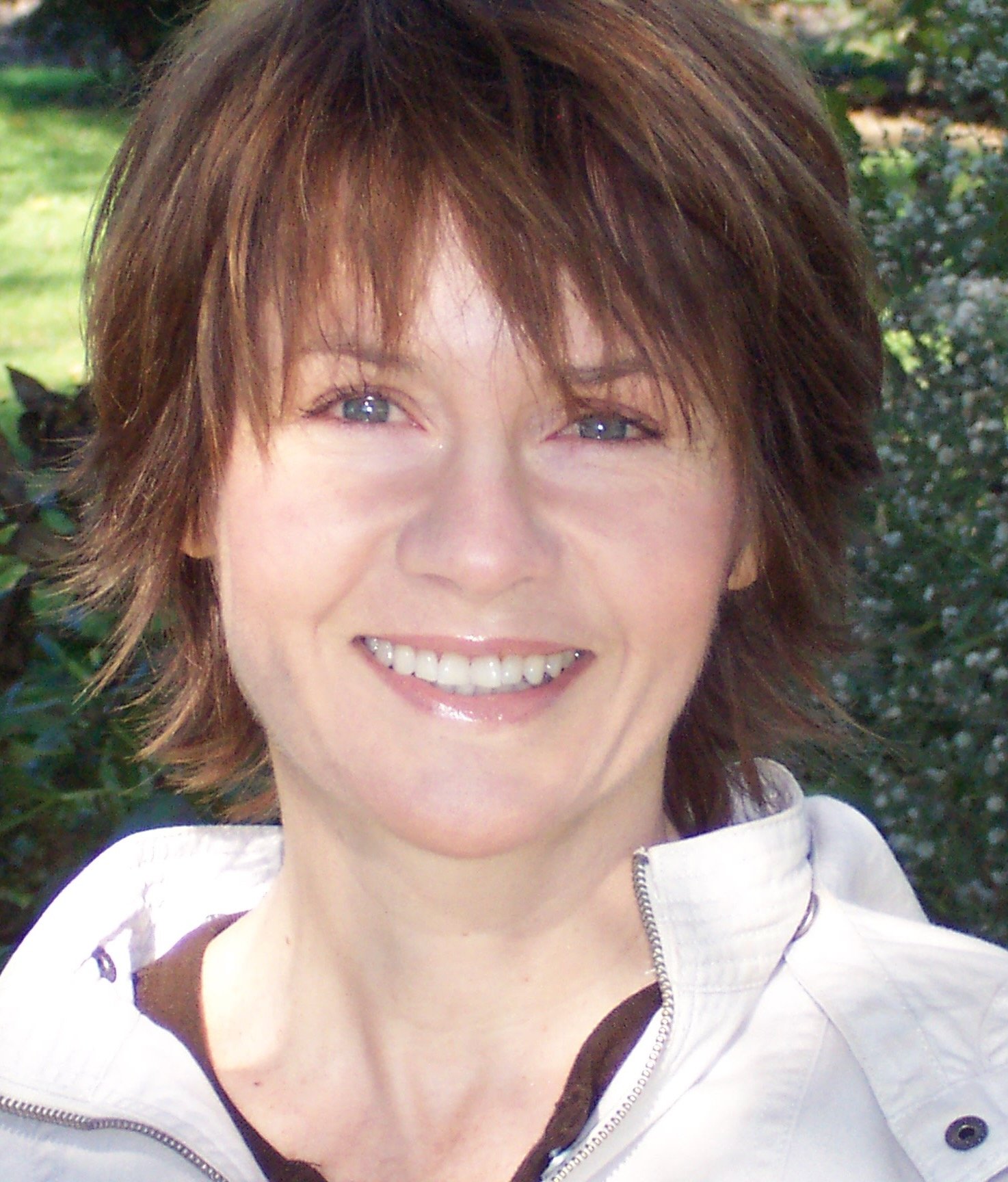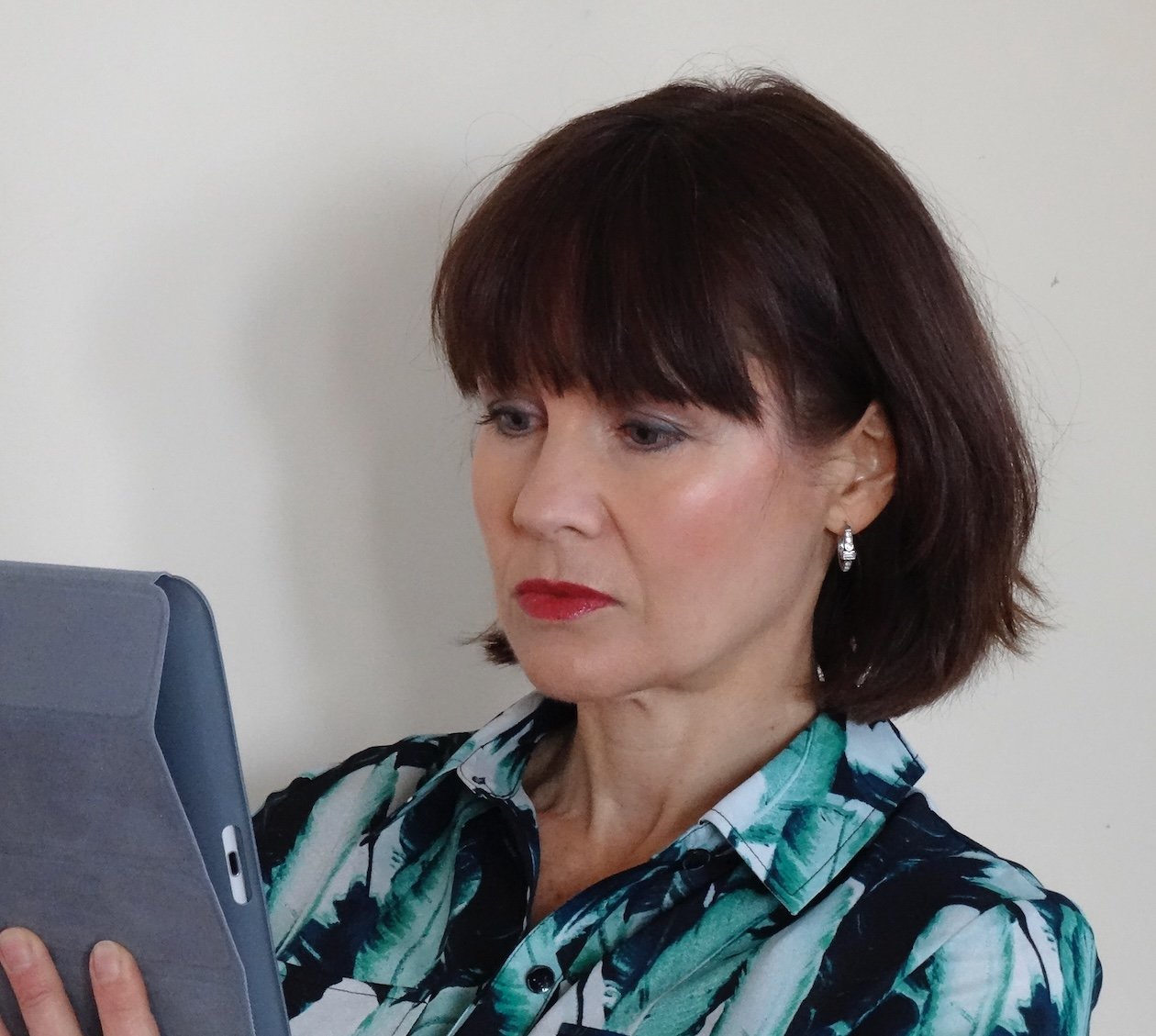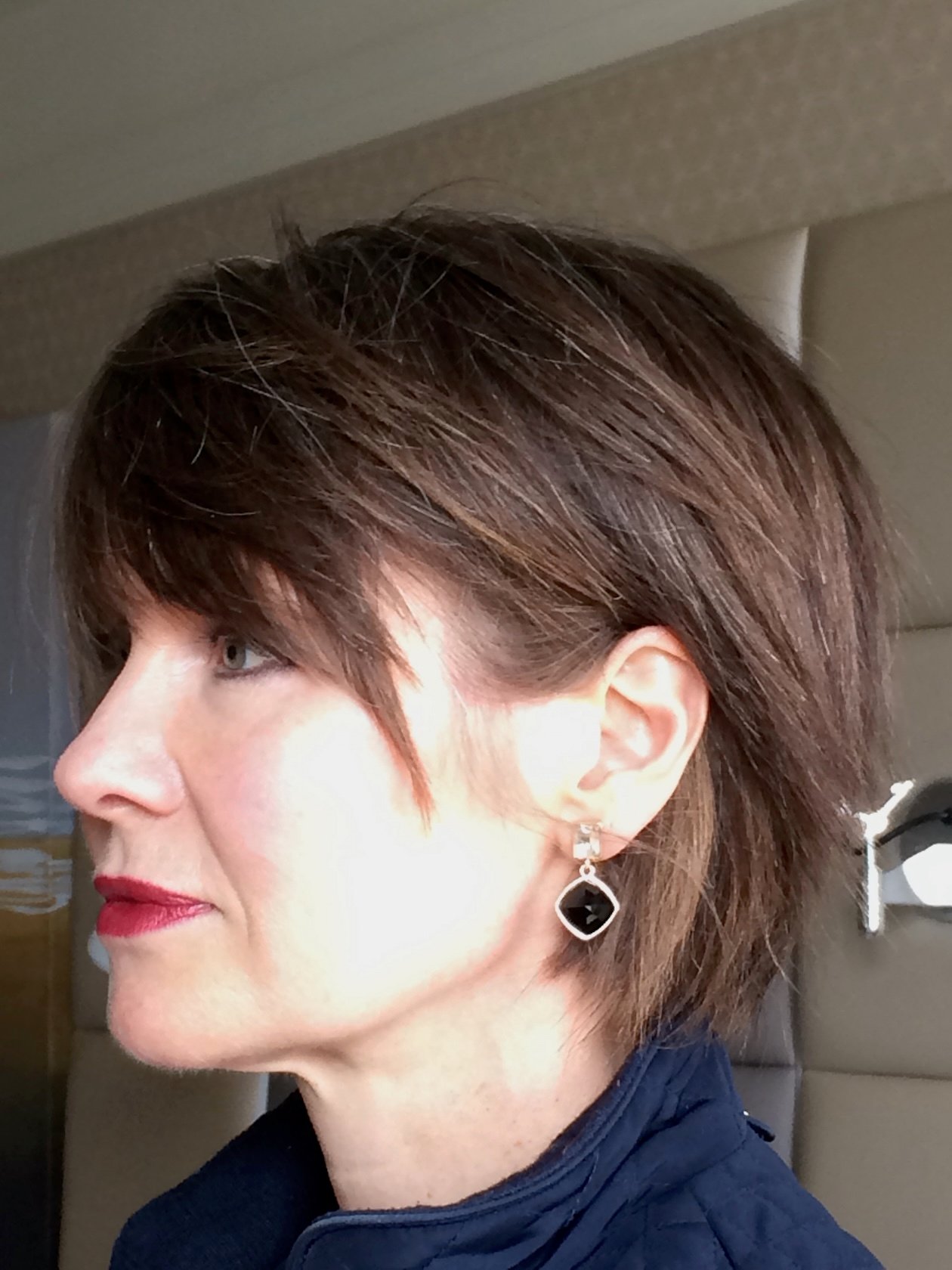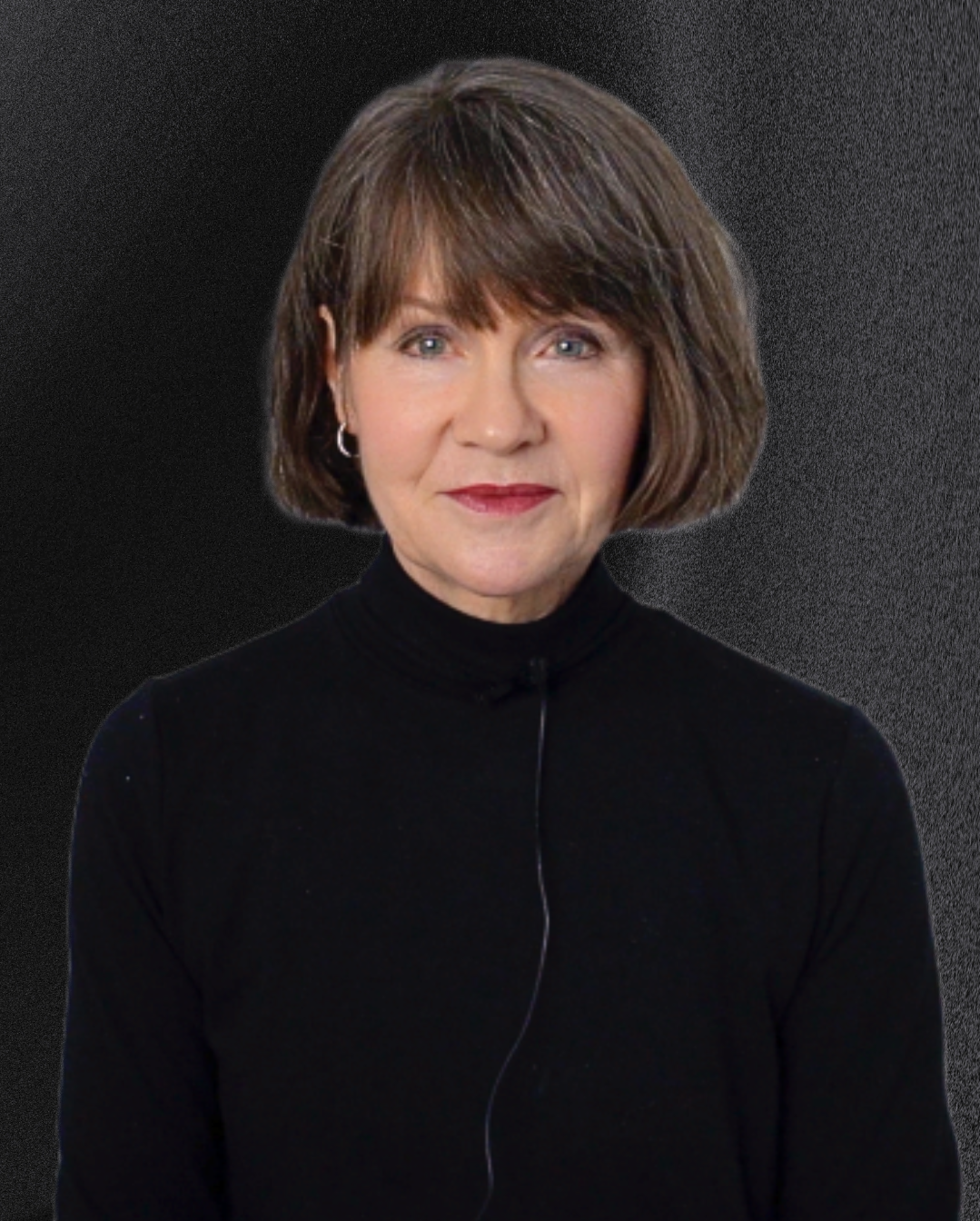

Christine Scaman October 1, 2025
Hi, I'm Christine ...
I became a colour analyst in the Sci\ART system in 2009. I had tried a few quizzes and felt confident that my Season was Autumn (Season is the term for the 12 groups of natural colours in people).
As part of my training, I was analyzed myself and discovered my Season to be Dark Winter (a blend of Winter and Autumn, mostly Winter). The reasons were clear, specific, evidence-based, and visible to everyone in the room.
That moment was the start of a journey that reshaped how I see myself, my wardrobe, and what's possible for anyone who learns their colours.
Before Colour Analysis
For 20 years, I was a veterinarian. Clothing and colour were not my focus. Like most women I knew, I wore what was available, guided by trends and the advice of others.
Looking back, I see what wasn’t working:
- My eyes floating in a beige blur.
- Hair dyed in warm tones for decades. Recommended, but never quite right.
- An endless cycle of second-guessing and wondering, "Are these colours helping me? Why do I feel so unsure?"
I wasn’t alone. Many of us were asking the same questions but didn’t yet have the tools for real answers.

Discovering My Palette
With the training, I left with:
- A Season palette of colours.
- Proof that the system worked. We had analyzed eight people with convincing results.
- The memory of how different, how right, I could look with the right colours.
I also had books and reference material, but they were too general.
The missing piece? Specific, practical guidance on how to actually use my palette in daily life and build a wardrobe in my colours.
As I met with clients in other Seasons and listened to their questions, I noticed similar concerns within each Season. In time, I learned what worked in solving everyone's colour questions, not just mine.
The First Five Years
Like anyone learning something new, I stumbled, adjusted, and found my footing.
Year 1: The rediscovery of white and black got me started while I adjusted cosmetic and hair colour. With the colours around the face out of harmony, clothing colours weren't having the effect I had seen in the mirror (for the colour analysis, chemical hair colour is covered with a gray scarf).
Year 2: Encouragement came from looking better without needing outside opinions. Even small steps were big improvements.
Year 3: Choosing colours from the full palette was overwhelming. I simplified, focussing on one strip of six shades instead of sixty. Shopping became easier, faster, and more successful.
Year 4: I added more colours to my wardrobe and had enough great outfits to think about appearance with confidence.
Year 5: Learning that progress isn’t perfect. It's focusing on one thing, experimenting, overshooting, undershooting, finding balance, and moving on to the next.

What improved most:
- I stepped out of the foggy background of my clothes.
- Feature definition! My face came into focus, with distinct shapes and structure.
- For the first time, clothing and makeup were supporting me instead of competing.
- I had a growing sense of independence and individuality in appearance.
Lessons Along the Way
Not every challenge resolved immediately. Hair and lip colour took time. New life stages brought new appearance questions. But each answer was still inside the same palette, adapted to each season of life.
Among the revelations along the way, I recognized the palette colours as those in my face and eyes. The palette could even be a substitute for a face, like a pixelated image, calibrated to our natural colours. Practical and accurate colour decisions without distractions!
In creating my wardrobe and with hundreds of clients, I realized:
- Information must be general enough to guide every person in a Season.
- Specific enough to give clear, practical advice.
- And flexible enough to evolve with us through our lives.
Building 12 BLUEPRINTS
I wasn’t interested in fashion trends. I wanted tools that worked and kept working. As I met with students and clients, I saw a pattern:
- People were capable of transforming themselves once they had the palette and clear guidance.
- The fashion industry wasn’t giving that information. It wasn’t designed to.
- A better way was possible.
That’s why I built 12 BLUEPRINTS, a place where you’ll find clarity instead of guesswork, tools instead of trends, and the freedom to dress in harmony with who you really are.
12 BLUEPRINTS has grown into a place where colour becomes simple, useful, relatable to you, and life-changing.
Here, you'll learn how to:
- Think independently about your appearance.
- Filter advice and know what applies to you.
- Use your palette as a lifelong system for making decisions.
- Step into the confidence of a self-respecting approach to beauty.
A few final adjustments:
- The easiest way to stop fussing with hair colour was to stop colouring it. Step forward.
- Lip colour cooler and darker. Rest of makeup, same. Step forward.
- Clothing colours softer. Step forward.
- Learning to manage appearance as a complete picture rather. Making colour choices with the palette ensured harmony between the parts. It was the answer to harmony in the whole that I'd been looking for.

Like a magic trick, once you see how it works, the mystery dissolves. Anyone can learn it. It's just teaching yourself a new habit. In time, it looks easy because now, for you, it is easy.
The second edition of the book, Return to Your Natural Colours, was released in 2018, with the header image above on the back cover.
The third editions, which are the Season e-books on this site, were published in 2024.
Today
I'm living in Prince Edward Island, on Canada’s east coast (famous as the home of Anne of Green Gables). Afternoons often find me walking beaches or forests.
I'm deeply drawn to the natural world as the ultimate meeting point of systems-thinking and creativity. That's why my logo is a Nautilus shell, a symbol of symmetry, biology, and beauty in the real world. Colour analysis is the same, a system with the power to create beauty.

What I believe about colour in appearance:
- Our natural colours are the most flattering, seamless, effortless colours for creating our appearance. What colours could look better with our face than those already there?
- An effective wardrobe should operate smoothly and support any lifestyle we desire.
- Our wardrobe shouldn't require continuous reinvention or distracting impulse choices.
- The colours we wear should tell the true story of who we are.
Colour has never been more relevant. The Internet gave everyone access. And now, AI is part of the conversation. Even if it’s not perfect yet, we’re on the edge of a new revolution in how people understand and apply their colours.
I’m so grateful to walk this next part of the road with you.
My Promise to You
Knowing my colours brought me lasting peace with my appearance.
My mission is to help you feel the same calm strength, in harmony with yourself.
Colour isn’t just about clothes and makeup.
Wearing colour well brings us clarity and freedom.
And finally recognizing ourselves in the mirror.


